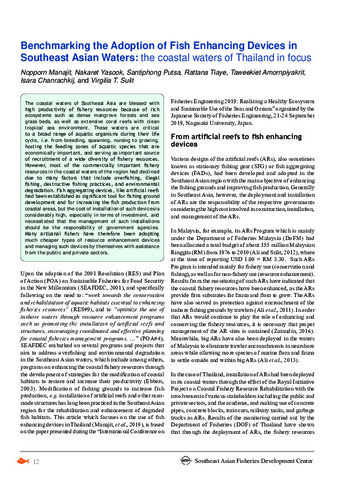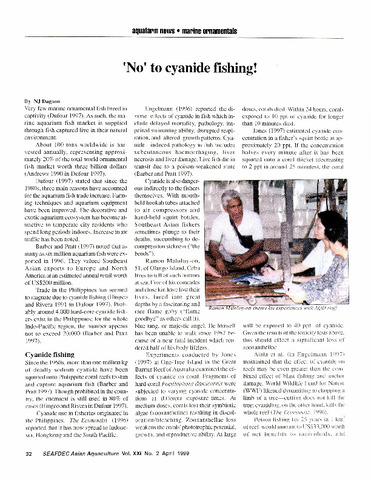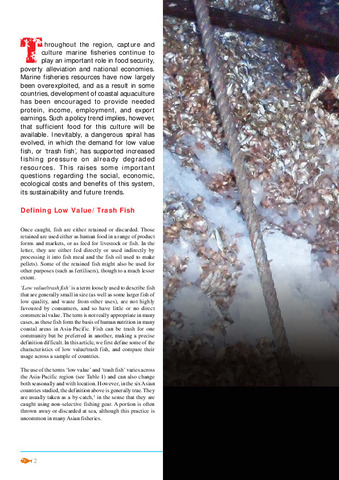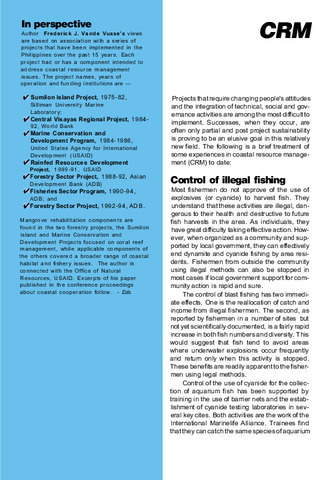Benchmarking the adoption of fish enhancing devices in Southeast Asian waters: the coastal waters of Thailand in focus
Share
Abstract
The coastal waters of Southeast Asia are blessed with high productivity of fishery resources because of rich ecosystems such as dense mangrove forests and sea grass beds, as well as extensive coral reefs with clean tropical sea environment. These waters are critical to a broad range of aquatic organisms during their life cycle, i.e. from breeding, spawning, nursing to growing, hosting the feeding zones of aquatic species that are economically important, and serving as important source of recruitment of a wide diversity of fishery resources. However, most of the commercially important fishery resources in the coastal waters of the region had declined due to many factors that include overfishing, illegal fishing, destructive fishing practices, and environmental degradation. Fish aggregating devices, like artificial reefs had been established as significant tool for fishing ground development and for increasing the fish production from coastal areas, but the cost of installation of such devices is considerably high, especially in terms of investment, and necessitated that the management of such installations should be the responsibility of government agencies. Many artisanal fishers have therefore been adopting much cheaper types of resource enhancement devices and managing such devices by themselves with assistance from the public and private sectors.
Suggested Citation
Manajit, N., Yasook, N., Putsa, S., Tiaye, R., Amornpiyakrit, T., Chanrachkij, I., Sulit, V. T. (2019). Benchmarking the adoption of fish enhancing devices in Southeast Asian waters: the coastal waters of Thailand in focus. Fish for the People, 17(3), 12-17.
Subject
Collections
Related items
Showing items related by title, author, creator and subject.
-
'No' to cyanide fishing!
Dagoon, N. J. (Aquaculture Department, Southeast Asian Fisheries Development Center, 1999) -
Prized commodity: Low value/trash fish from marine fisheries in the Asia-pacific region
Staples, Derek; Funge-Smith, Simon (Secretariat, Southeast Asian Fisheries Development Center, 2005)The use of the terms 'low value' and 'trash fish' varies across the Asia-Pacific region and can also change both seasonally and with location. This article defines low value/trash fish as 'Fish that have a low commercial ... -
CRM in the Philippines: Lessons learned
Southeast Asian Fisheries Development Center, Aquaculture Department (Aquaculture Department, Southeast Asian Fisheries Development Center, 1996)Philippine coastal communities can become capable fishery resource managers and that their management practices can become largely self-sustaining if the project approach focuses on assisting fishermen to learn how to help ...





